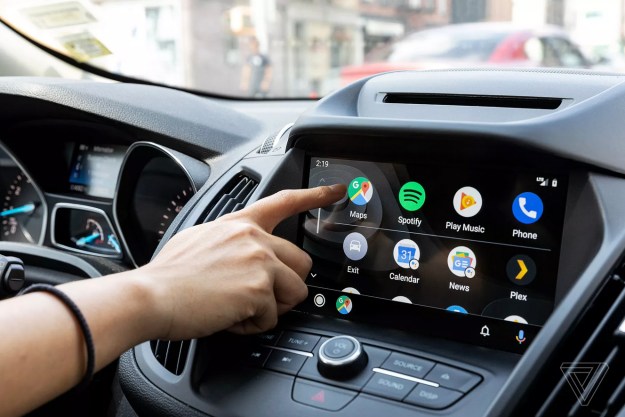
About a year ago, some Android Spotify users reported that they were seeing a new, simplified layout when they had the app open and were connected to their car’s Bluetooth. The guess at the time was that Spotify was testing a new way for people to interact with its app while driving, presumably to reduce distractions. Now, there’s no guesswork needed — Spotify announced it’s rolling out Car View for all Android users.
The new, simplified layout will launch automatically when the app detects a car Bluetooth connection, and it works in both portrait and landscape orientations. It’s not just for Premium subscribers; free users can get the experience via shuffle mode. Unfortunately, for now, the new view will only work with Bluetooth connections, not AUX input, or via USB. Though it’s currently only on Android, Spotify says it will notify users as soon as it’s available on other platforms, which should give iOS users at least a glimmer of hope that their devices won’t be left out of this update.
Spotify is no stranger to the driving world, in fact the company has a strong track record of launching features that not only make it easier to use while conducting other tasks in the car (like navigation), but also make it easier for you to take your tunes with you even if you’re just the passenger. Waze’s Spotify integration is a good example, as is the company’s partnership with Uber. Spotify is also one of the primary music apps that drivers with an Android Auto-compatible car stereo have become accustomed to using.
Car view will no doubt be a welcome addition to the platform, and it’s another indicator that the company isn’t afraid to try new things in response to user feedback. Last year, news broke that Spotify was testing a song import feature, which would let users add their own private collection of music to the platform for those times when the company’s own database might be missing some rarities. Though this feature hasn’t rolled out widely, if car view’s development history is any indication, it may not be long until it is.
Editors' Recommendations
- Spotify adds music videos for Premium users in a handful of countries
- Spotify adds a paid audiobook option to its free tier
- How televisions point the way for a future with CarPlay and Android Auto
- Spotify adds subscribers, still hasn’t added high-res audio
- Android users are about to lose a handy Sonos feature



